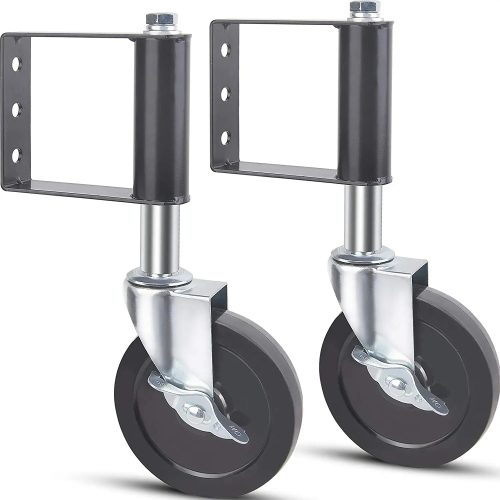Introduction: When it comes to material handling in various industries, the choice of casters plays a pivotal role in ensuring smooth and efficient operations. Spring-loaded casters, specifically designed for these tasks, offer versatility and enhanced performance. In this article, we will explore the key considerations and factors to help you choose the right spring-loaded casters for your material handling needs.
- Load Capacity: The first and foremost consideration when selecting spring-loaded casters is the load capacity. Determine the maximum weight your casters will need to support, factoring in not only the weight of the load but also any potential impact or shock loading. Choosing casters with the appropriate load capacity ensures that they can handle the demands of your specific application.
- Wheel Material: The choice of wheel material is crucial as it directly impacts the caster’s performance. Consider factors such as floor type, environmental conditions, and the nature of the load. Common wheel materials for spring-loaded casters include rubber, polyurethane, and steel. Each material has its advantages, such as grip, durability, and resistance to various elements. Select the wheel material that best suits your material handling environment.
- Swivel vs. Rigid Casters: Another decision to make is whether to opt for swivel or rigid spring-loaded casters. Swivel casters allow for greater maneuverability, making it easier to change direction. Rigid casters, on the other hand, provide stability and support when moving in a straight line. Consider the layout of your workspace and the specific requirements of your material handling tasks to decide whether you need swivel, rigid, or a combination of both types of casters.
- Wheel Diameter: The wheel diameter directly affects how well the casters can navigate various terrains and obstacles. Larger wheels tend to roll more smoothly over uneven surfaces and can handle bumps and obstacles more effectively. However, they may require more space. Smaller wheels are better for applications where space is limited. Consider the terrain and space available in your material handling area when choosing the wheel diameter.
- Brake Options: Depending on your material handling needs, you may want to consider casters with brake options. Brakes can provide additional stability and control when maneuvering loads, especially on inclines or when precise positioning is required. The type of brake (total lock, swivel lock, or directional lock) should align with your specific material handling tasks.
- Environmental Considerations: Think about the environmental conditions your spring-loaded casters will be exposed to. If your workplace involves exposure to moisture, chemicals, or extreme temperatures, ensure that your chosen casters are designed to withstand these conditions. This will prevent premature wear and ensure the longevity of your casters.
Conclusion: Selecting the right spring-loaded casters for your material handling needs is essential for maintaining efficiency and safety in your workplace. Consider load capacity, wheel material, swivel vs. rigid options, wheel diameter, brake choices, and environmental factors when making your decision. By taking these factors into account, you can ensure that your chosen casters are perfectly suited for your specific material handling requirements, leading to smoother and more productive operations.


